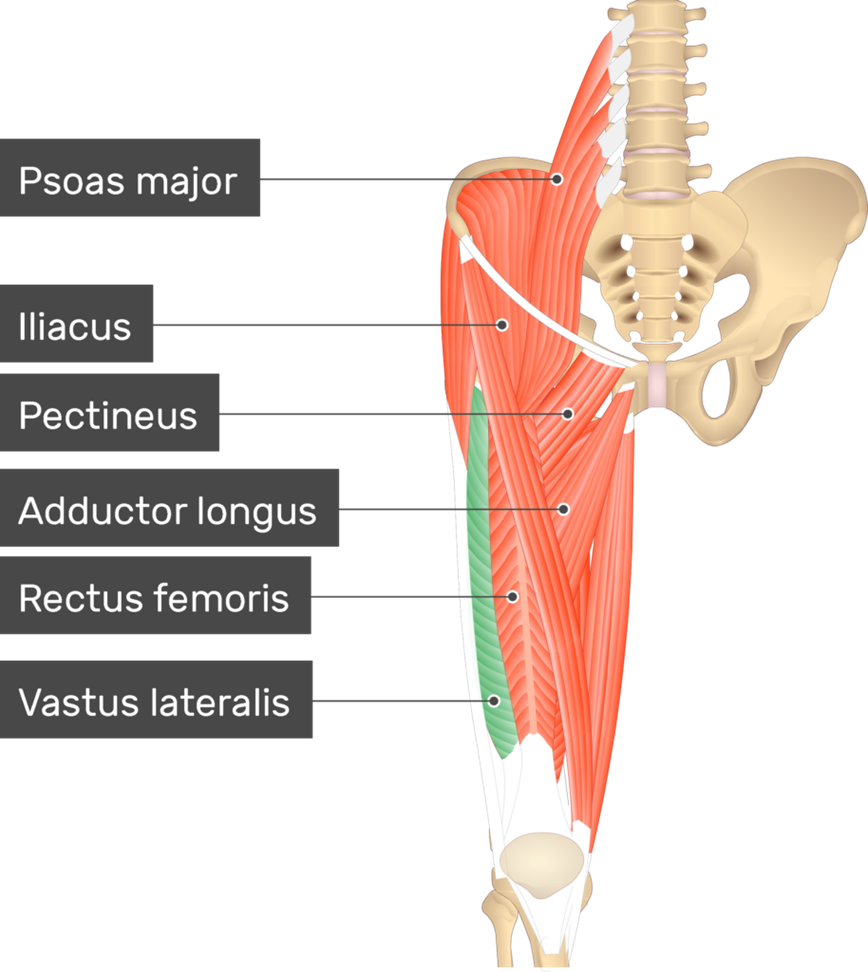A nurse is preparing to administer vitamin K by IM injection to a newborn. The nurse should administer the medication into which of the following muscles?
Dorsogluteal
Vastus lateralis
Deltoid
Ventrogluteal
The Correct Answer is B
Choice A reason:
The dorsogluteal muscle is not recommended for intramuscular injections in newborns due to the risk of damaging the sciatic nerve. Additionally, this muscle is not well-developed in newborns, making it a less effective site for medication absorption.
Choice B reason:
The vastus lateralis muscle, located on the lateral aspect of the thigh, is the preferred site for intramuscular injections in newborns. This muscle is well-developed at birth, providing a large and safe area for the injection. It also has fewer major blood vessels and nerves, reducing the risk of injury. The vastus lateralis muscle ensures effective absorption of the medication, making it the optimal choice for administering vitamin K to prevent vitamin K deficiency bleeding (VKDB).

Choice C reason:
The deltoid muscle is not typically used for intramuscular injections in newborns because it is relatively small and underdeveloped at birth. This muscle is more suitable for older children and adults, where it can accommodate larger volumes of medication without causing discomfort or injury.
Choice D reason:
The ventrogluteal muscle is another site that is not commonly used for newborns. While it is a safe and effective site for intramuscular injections in older children and adults, it is not as easily accessible in newborns. The vastus lateralis remains the preferred site due to its size and ease of access.
Nursing Test Bank
Naxlex Comprehensive Predictor Exams
Related Questions
Correct Answer is C
Explanation
Choice A Reason:
Reddened with a small amount of bloody drainage is a common finding immediately after circumcision. However, this is not the expected appearance after the initial healing phase. The presence of bloody drainage should decrease over time, and the site should begin to show signs of healing.
Choice B Reason:
Pink without drainage is not typical immediately after circumcision. The surgical site will usually be red and may have some drainage as part of the normal healing process. A completely pink and dry site would be expected only after full healing has occurred.
Choice C Reason:
Reddened with a scant amount of yellow exudate is the expected appearance during the healing process. The yellow exudate is part of the normal healing response and should not be mistaken for infection. This exudate typically appears within the first few days after circumcision and indicates that the healing process is progressing normally.
Choice D Reason:
Reddened, with copious blood is not normal and indicates a potential complication. Copious bleeding from the circumcision site requires immediate medical attention as it may suggest an issue with clotting or a problem with the surgical site.
Correct Answer is A
Explanation
Choice A reason:
Monitoring blood glucose levels is the priority intervention for a newborn who is small for gestational age (SGA). SGA infants are at a higher risk for hypoglycemia due to their limited glycogen stores and increased metabolic needs. Hypoglycemia can lead to serious complications such as seizures, brain damage, and even death if not promptly addressed. Therefore, frequent monitoring of blood glucose levels is crucial to ensure early detection and treatment of hypoglycemia, thereby preventing these adverse outcomes.
Choice B reason:
Monitoring intake and output is important for assessing the hydration status and renal function of the newborn. While this is a necessary aspect of care, it is not the priority intervention for an SGA infant. Ensuring adequate fluid intake and monitoring urine output helps in maintaining electrolyte balance and preventing dehydration, but it does not directly address the immediate risk of hypoglycemia, which is more critical in the initial care of an SGA newborn.
Choice C reason:
Monitoring weight is essential for tracking the growth and development of the newborn. Regular weight checks help in assessing the effectiveness of nutritional interventions and identifying any growth delays. However, this intervention is more relevant for long-term management rather than immediate care. The priority in the immediate postnatal period is to stabilize the infant’s condition, particularly by preventing hypoglycemia.
Choice D reason:
Monitoring axillary temperature is important to prevent hypothermia, which SGA infants are also at risk for due to their low body fat and poor thermoregulation. While maintaining a stable body temperature is crucial, it is not the most immediate concern compared to hypoglycemia. Hypoglycemia poses a more immediate threat to the infant’s health and requires prompt intervention.
Whether you are a student looking to ace your exams or a practicing nurse seeking to enhance your expertise , our nursing education contents will empower you with the confidence and competence to make a difference in the lives of patients and become a respected leader in the healthcare field.
Visit Naxlex, invest in your future and unlock endless possibilities with our unparalleled nursing education contents today
Report Wrong Answer on the Current Question
Do you disagree with the answer? If yes, what is your expected answer? Explain.
Kindly be descriptive with the issue you are facing.
